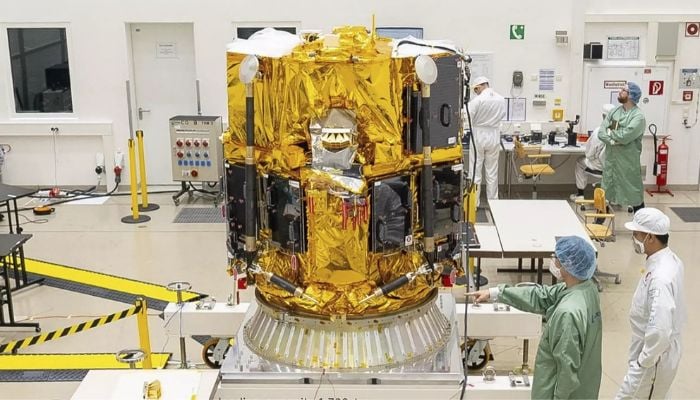Table of Contents
ToggleIntroduction:
The race to land on the moon has heated up once again with iSpace, a Japanese space startup, attempting to make history by landing a spacecraft on the lunar surface. This would mark the first successful commercial lunar landing in history, and a major milestone for private space exploration. In this article, we will explore the iSpace mission, the technology involved, and the potential impact on space exploration.
The iSpace Mission:
iSpace’s mission, named Hakuto-R, aims to land a small rover on the surface of the moon in the Atlas crater of Mare Frigoris. The spacecraft will be carried to the moon by SpaceX’s Falcon 9 rocket, which was launched from NASA’s Kennedy Space Center in Florida. Once the spacecraft reaches the moon, it will use its onboard technology to navigate the lunar surface, collect data, and transmit it back to Earth.
The Technology Involved:
The Hakuto-R mission is powered by iSpace’s lunar lander, which is equipped with advanced navigation and communication technology. The spacecraft also carries a small rover, which will collect data and images of the lunar surface. The lander and rover are powered by solar panels and will be able to operate for several days on the lunar surface.
The Potential Impact:
If successful, the iSpace mission could have a significant impact on space exploration. The mission marks the first commercial lunar landing attempt and could pave the way for more private companies to enter the space race. It could also provide valuable data and insights into the lunar surface, which could inform future manned missions to the moon.
The Challenges:
The iSpace mission faces several challenges, including the harsh lunar environment and the complex navigation required to land on the moon. The mission also faces competition from other space agencies and private companies, which are also working to land on the moon.
The Future of Space Exploration:
The success of the Hakuto-R mission could open new doors for space exploration. Private companies like iSpace are leading the way in commercial space exploration and could revolutionize the space industry. The future of space exploration could see more private companies entering the space race, working alongside space agencies to push the boundaries of space technology.
The Environmental Impacts
Environmental impacts are a critical consideration in space exploration, as the activities of humans in space can have far-reaching effects on the environment. Some of the key environmental impacts of space exploration include:
- Space debris: One of the most significant environmental impacts of space exploration is the accumulation of space debris in Earth’s orbit. Space debris, such as spent rocket stages and discarded satellites, can pose a threat to functioning spacecraft and can be difficult to remove.
- Atmospheric pollution: Rockets and other space vehicles release a variety of pollutants into the atmosphere, including carbon dioxide, nitrogen oxides, and other chemicals. These emissions can contribute to climate change and other environmental problems.
- Impact on wildlife: The launch and operation of space vehicles can have an impact on wildlife in the surrounding areas. The noise and vibration from launches can disturb wildlife, and the release of chemicals and other pollutants can have negative impacts on local ecosystems.
- Resource depletion: Space exploration requires a significant amount of resources, including fuel, water, and materials. The extraction and use of these resources can have a negative impact on the environment and contribute to resource depletion.
- Planetary contamination: The exploration of other planets and celestial bodies carries a risk of contamination, as Earth-based microbes could potentially contaminate these environments. This could have significant implications for the search for extraterrestrial life and the study of these environments.
Overall, it is important for space agencies and companies to consider the environmental impacts of their activities and take steps to minimize these impacts. This could include using cleaner fuels, reducing emissions, and implementing measures to prevent the accumulation of space debris. By taking a proactive approach to environmental stewardship, space exploration can continue to push the boundaries of human knowledge while minimizing its impact on the planet.
Conclusion:
The iSpace mission represents a major milestone in the history of space exploration, marking the first commercial lunar landing attempt. The mission is powered by advanced technology and could have a significant impact on the future of space exploration. Whether or not the mission is successful, it represents a new chapter in the ongoing race to explore the final frontier.







